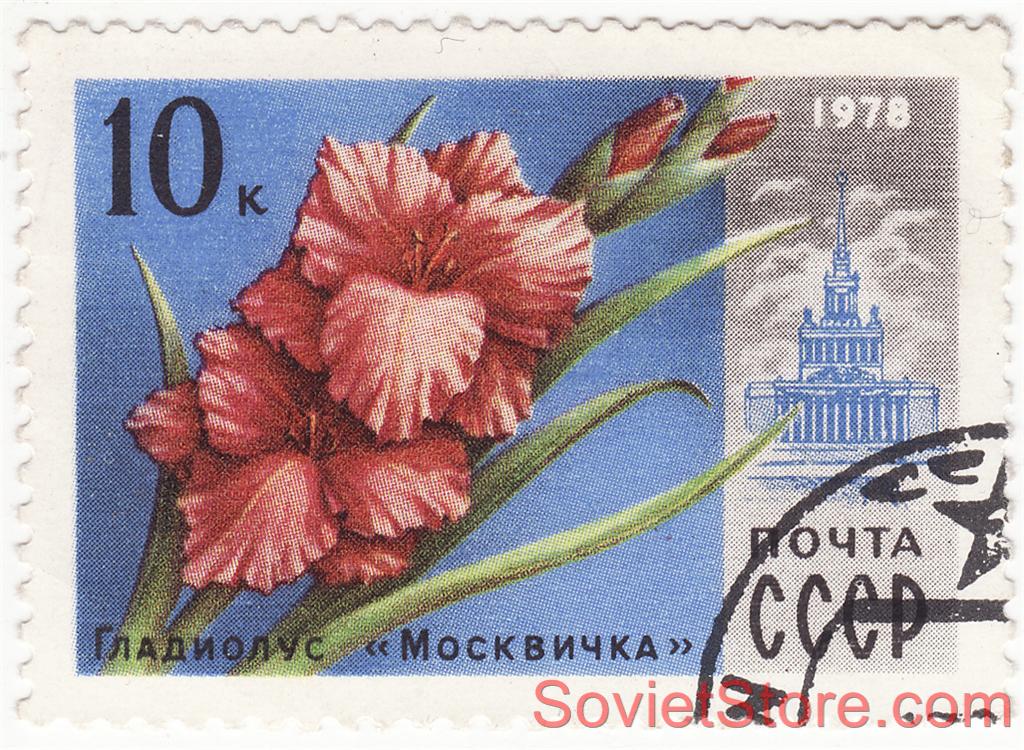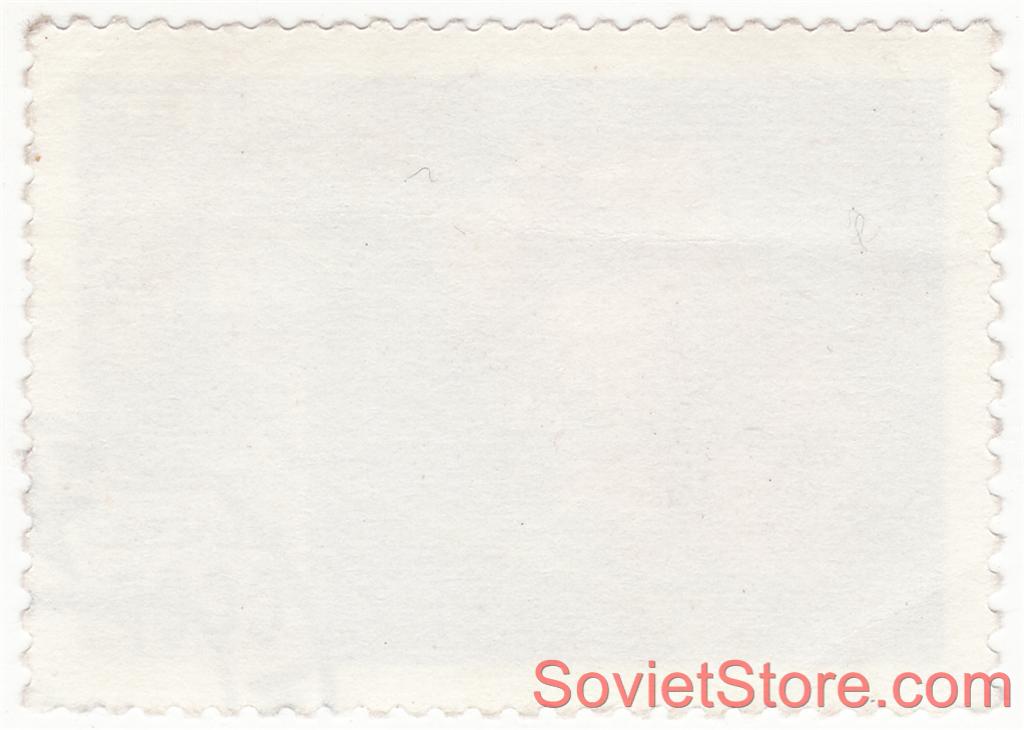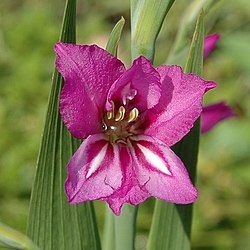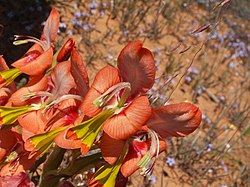SearchProduct Type
|
Add us to: Favorite Stores Item's weight: less then 1 g.
Stamp Authenticity Since 1939 till 1990 Lithuania suffered 3 occupations: 1 German (1941-1944) and 2 Soviet (1939-1941, 1944-1990), one of which lasted 46 years. In WWII occupations were based on violent battles between Germans and Russians. These historical events left a lot of stuff behind them selves. Almost every family in Lithuania has something left, related to USSR history in their forgotten drawers. So we are just traveling around lithuanian countrysides and collecting this memorabilia. Item is original, genuine, authentic, unique, not a copy or replica - has 2-12 decades of it's own unique history.
Gladiolus (from Latin, the diminutive of gladius, a sword) is a genus of flowering plants in the iris family (Iridaceae). Sometimes called the sword lily, the most widely-used English common name for these plants is simply gladiolus (plural gladioli, gladioluses or sometimes gladiolas)
DescriptionThe genus Gladiolus contains about 260 species, of which 250 are native to sub-Saharan Africa, mostly South Africa. About 10 species are native to Eurasia. There are 160 species of Gladiolus endemic in southern Africa and 76 in tropical Africa. The species vary from very small to the spectacular giant flower spikes in commerce. These attractive, perennial herbs are semihardy in temperate climates. They grow from rounded, symmetrical corms, that are enveloped in several layers of brownish, fibrous tunics. Their stems are generally unbranched, producing 1 to 9 narrow, sword-shaped, longitudinal grooved leaves, enclosed in a sheath. The lowest leaf is shortened to a cataphyll. The leaf blades can be plane or cruciform in cross section. The fragrant flower spikes are large and one-sided, with secund, bisexual flowers, each subtended by 2 leathery, green bracts. The sepals and the petals are almost identical in appearance, and are termed tepals. They are united at their base into a tube-shaped structure. The dorsal tepal is the largest, arching over the three stamens. The outer three tepals are narrower. The perianth is funnel-shaped, with the stamens attached to its base. The style has three filiform, spoon-shaped branches, each expanding towards the apex. The ovary is 3-locular with oblong or globose capsules, containing many, winged brown, longitudinally dehiscent seeds. These flowers are variously colored, pink to reddish or light purple with white, contrasting markings, or white to cream or orange to red. The South African species were originally pollinated by long-tongued anthrophorine bees, but some changes in the pollination system have occurred, allowing pollination by sunbirds, noctuid and sphingid moths, long-tongued flies and several others. Gladioli are used as food plants by the larvae of some Lepidoptera species including the Large Yellow Underwing. Gladioli have been extensively hybridized and a wide range of ornamental flower colours are available from the many varieties. The main hybrid groups have been obtained by crossing between four or five species, followed by selection: Grandiflorus, Primulines and Nanus. They make very good cut flowers. However, due to their height, the cultivated forms frequently tend to fall over in the wind if left on the plant.
SpeciesThe genus Gladiolus has been divided in to many sections. Where possible, the sections have been indicated. Most species, however, are only tentatively placed.
CultivationIn temperate zones, the corms of most species and hybrids should be lifted in autumn and stored over winter in a frost-free place, then replanted in spring. Some species from Europe and high altitudes in Africa, as well as the small 'Nanus' hybrids, are much hardier (to at least -15°F/-26°C) and can be left in the ground in regions with sufficiently dry winters. Plants are propagated either from small cormlets produced as offsets by the parent corms, or from seed; in either case, they take several years to get to flowering size. A popular 'Nanus' cultivar is Atom. In popular cultureThe stage character Dame Edna Everage has adopted the gladiolus as her trademark flower; the flowers often appear in her publicity photos and stage appearances. The singer Morrissey has done the same thing since his days in The Smiths in the 1980s, this use of flowers being unusual in popular-music circles. References
All-Russian Exhibition Centre is a permanent general-purpose trade show in Moscow, Russia. The "All-Russia Exhibition Centre" is a state joint-stock company, officially abbreviated as GAO "VVC", which stands for "Gosudarstvennoye Aktsionernoye Obshchestvo 'Vserossiyskiy Vystavochny Centr'". VVC is a member of exhibition associations: IUEF (since 1991) and UFI (since 1997).
VDNH1935-1939 ConstructionThis section is based on Soviet public documents, available in Russian at www.bcxb.ru
The exhibition was established February 17, 1935 as the All-Union Agricultural Exhibition (VSKhV) (Russian: Всесоюзная Сельско-Хозяйственная Выставка Vsesoyuznaya Selsko-Khozyaystvennaya Vystavka). Existing site (then known as Ostankino Park, a country territory recently incorporated into city limits), was approved in August, 1935. Master plan by Vyacheslav Oltarzhevsky was approved in April, 1936, and the first show season was announced to begin in July, 1937. However, the plans didn't materialize, and 3 weeks before the deadline Stalin personally postponed the exhibition by one year (to August 1938). It seemed that this time everything would be ready on time, and again the builders failed to complete their work, and regional authorities failed to select and deliver proper exhibits. Some pavilions and the 1937 entrance gates by Oltarzhevsky were torn down to be replaced with more appropriate structures (most pavilions were criticized for having no windows). According to Oltarzhevsky's original plan, all of the pavilions were to be constructed from wood. In 1938, a government commission examined the construction and decided that it did not suit the ideological direction of the moment. The exhibition was considered too modest and too temporary. Oltarzhevsky was arrested, together with the Comissar for Agriculture and his staff, and eventually released in 1943. Later, he worked on the 1947-1953 Moscow skyscraper project. As a result, in August 1938 Nikita Khrushchev, speaking at the Supreme Soviet assembly, declared that the site is not ready, and the opening was extended to August, 1939. It opened indeed August 1, 1939, and worked in 8AM - 11PM mode until October 25 (40,000 daily attendance). 1940 and 1941 seasons followed; after the German invasion, July 1, 1941 the exhibition was closed - until the end of World War II. 1939 pavilions, as presented in 1950 album:
1948-1959 Renovation
In October, 1948 the State ordered to renew the Exhibition, starting with the 1950 season. Again, the opening was postponed more than once; the first post-war season opened in 1954 (still as Agricultural exhibition). In 1956 season the planners set aside an Industrial area within the main territory; more restructuring and rebuilding followed. In 1959 the park was renamed Exhibition of Achievements of the National Economy (Russian: Выставка Достижений Народного Хозяйства Vystavka Dostizheniy Narodnovo Khozyaystva) or ВДНХ/VDNKh. By 1989 the exhibition had 82 pavilions with the exhibition area of 700,000 square metres. Each pavilion (including the 1939 "regions") had been dedicated to a particular industry or a field: the Engineering Pavilion (1954), the Space Pavilion (1966), the Atomic Energy Pavilion (1954), the People's Education Pavilion (1954), the Radioelectronics Pavilion (1958), the Soviet Culture Pavilion (1964). During the Soviet times, each year VDNKh hosted more than 300 national and international exhibitions and many conferences, seminars and meetings of scientists and industry professionals. These events attracted about 11 million visitors annually, including 600,000 guests from outside the Soviet Union. The "Radioelectronics" exhibition hall for some years housed the working (and unique) prototypes of the most advanced ES EVM computers to date, which were time-shared by many research organizations right on the premises. The most memorable feature of the exhibition site was the statue Worker and Kolkhoz Woman (Rabochiy i Kolkhoznitsa), featuring the gigantic figures of a man and woman holding together the famous "hammer and sickle". The sculpture, which reaches 25 meters toward the sky, was created by Vera Mukhina and originally crowned the 35-meter-tall Soviet pavilion at the Exposition Internationale des Arts et Techniques dans la Vie Moderne (1937). The statue was featured on a logo of Mosfilm, Russia's largest movie studio. Present DayIn 1992, VDNKh was renamed, receiving its current name VVC. It occupies 2,375,000 square metres of which 266,000 square metres are used for indoor exhibits. The territory of VVC is greater than that of the Principality of Monaco and has approximately 400 buildings. Inadequate maintenance of Vera Mukhina's statue caused such disrepair that the statue was disassembled (see 2006 photographs of what's left). The term "VDNKh" is still in use, including the name of a nearby subway station. The free listing tool. List your items fast and easy and manage your active items.
| Return
Items must be returned within 30 days .
Refund will be given as Money back. Refund policy details: Return is accepted at any reason. Item(s) must arrive to us not later then 30 days after it was shipped out (you will be informed about this immediately after it will be done). Returned items must be the same item in the exact same condition as originally shipped. Refunds are for the final eBay item purchase price only, less a 10% restocking fee. Shipping costs, insurance, and handling charges (if any) are non refundable. Returns must be shipped insured. Shipping
Payment Method
Insurance
Not Offered (Domestic)
|
Shopping Cart |
|||||||||||||||||||||||||||||||||||||||||||||||||||||||||||||||||||||||||||||||||||||||||||||||||||||||||||||||||||||































